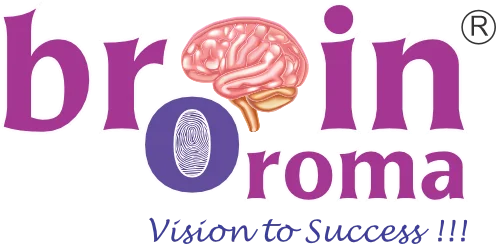Introduction: Anxiety Is Universal—But So Is Resilience
Anxiety can affect anyone, from children to older adults. Whether it’s exam stress, work pressure, or health concerns, feeling anxious is a normal part of life. The key is learning how to manage anxiety at every stage—so you can move beyond fear and thrive.
Understanding Anxiety: What Does It Look Like?
Anxiety is your brain’s way of responding to stress or perceived danger.
Common symptoms:
- Racing thoughts
- Rapid heartbeat
- Restlessness
- Trouble sleeping
- Avoiding triggers
While occasional anxiety is normal, persistent anxiety can impact your well-being.
Anxiety in Children (Ages 2–12): Building Emotional Strength
Common triggers:
- Separation from caregivers
- School stress
- Social fears
Brainoroma Approach:
- Use DMIT to understand your child’s strengths and learning style
- Teach deep breathing, mindfulness, and gentle routines
- Encourage creative outlets to express feelings—art, play, music
Tips for caregivers:
- Maintain a steady daily routine
- Listen and validate your child’s worries
- Use positive reinforcement to build courage
Anxiety in Teens (Ages 13–19): Navigating Pressures
Common triggers:
- Peer pressure
- Academic competition
- Social media comparison
- Identity changes
Brainoroma Approach:
- DMIT helps teens discover their natural talents, reducing pressure
- Practice journaling to understand thought patterns
- Foster independence through positive challenges
Tips for parents/teens:
- Schedule daily relaxation (meditation, exercise)
- Encourage open conversations
- Balance screen time
Anxiety in Young Adults (Ages 20–35): Confronting the Future
Common triggers:
- Career stress
- Relationship worries
- Financial uncertainty
- Fear of missing out
Brainoroma Approach:
- Counseling for confidence-building and breaking limiting beliefs
- Exercise and creative self-expression as healthy coping
- “Worry window”: Schedule time each day to reflect on worries, so anxiety doesn’t take over
Tips:
- Practice “box breathing”—inhale 4 sec, hold 4 sec, exhale 4 sec
- Challenge negative thoughts
- Seek supportive connections
Anxiety in Adults (Ages 36–55): Juggling Responsibilities
Common triggers:
- Work-life balance
- Parenting stress
- Health concerns
Brainoroma Approach:
- DMIT reveals stress triggers and resilience pathways
- Solution-focused counseling for stress management
- Encourage regular physical activity (walking, yoga)
Tips:
- Prioritize “me-time”
- Break tasks into smaller steps
- Foster healthy social bonds
Anxiety in Older Adults (Ages 55+): Finding Calm and Connection
Common triggers:
- Retirement transition
- Health or memory changes
- Loss or loneliness
Brainoroma Approach:
- Counseling for grief and anxiety
- DMIT for cognitive wellness and discovering new interests
- Join support groups/community activities
Tips:
The Universal Toolkit: Science-Backed Strategies
- Mindfulness/meditation: Reduces body’s stress response
- Regular exercise: Boosts mood and decreases anxiety
- Journaling: Clarifies thoughts and releases tension
- Therapeutic support: Counseling and counseling for deeper healing
When to Seek Help
If anxiety interferes with daily life, relationships, or well-being, seek professional support.
At Brainoroma, science meets compassion—helping every age group master their anxiety and grow stronger.
